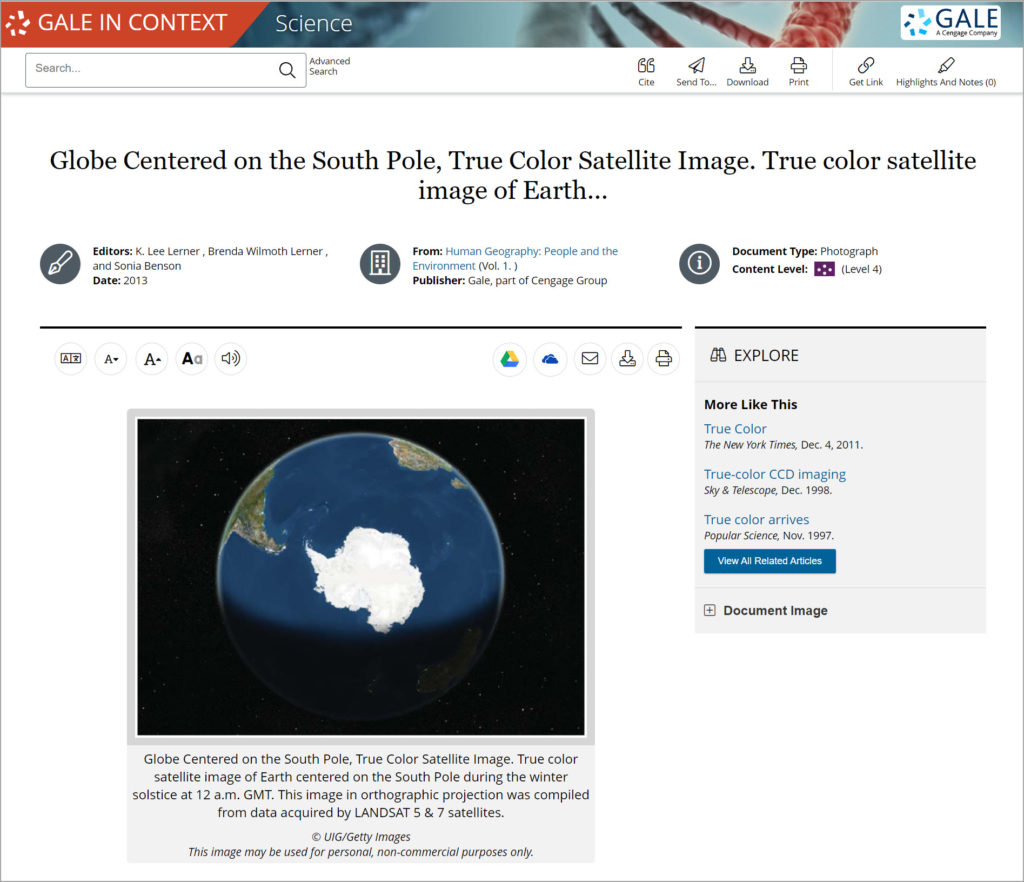| By Gale Staff |
As the days get shorter and temperatures drop, why not integrate the changing seasons into your lesson plans and library spaces?
Each year in the northern hemisphere, two solstices occur—the Summer Solstice in June and the Winter Solstice in December. In the United States, the Winter Solstice typically lands on December 21 or 22 and is known as the shortest day of the year and, thus, the longest night of the year. For many of us, the Winter Solstice marks the beginning of the winter season.
The Winter Solstice is the shortest day of the year, and most of us can expect to see the sunset in the early afternoon. You and your students can take time to discuss why this phenomenon occurs. The Earth spins on a tilt—at an angle of about 23° called the obliquity of the ecliptic—and that “tilt” plays an important role in our seasons. On the Winter Solstice, the Earth’s northern hemisphere is tilted furthest away from the sun. Communities at higher latitudes, like those in Alaska, see just five hours of daylight, and the Arctic Circle won’t see any sunlight on the Winter Solstice, experiencing 24 hours of darkness.
This year, the Winter Solstice is on Wednesday, December 21. Use this time to teach students more about the history and science behind this celestial event and how different cultures adapt to the shortened days. Consider exploring Gale In Context: Science’s topical collections to develop a solstice-themed lesson plan and assign related wintertime readings and activities in the week leading up to the holiday break.
Connect Learners to Accessible Content
No matter which subject you teach, you can find valuable digital content to support any lesson in Gale In Context: Science. Students can navigate hundreds of results easily using advanced filtering tools and a unique, interactive Topic Finder. Search results are immediately categorized by content: references, biographies, images, videos, audio, news, academic journals, magazines, and more. Plus, every query result comes labeled with a content level and Lexile measure to ensure that your students have resources appropriate to their reading levels, from elementary through high school. After all, it’s never too early to introduce your students to the skills needed to navigate digital resources.
Gale In Context: Science also works effortlessly alongside your school’s learning management system to help streamline lesson planning and everyday instruction. Easily download articles into a Google Drive or Microsoft OneDrive folder to share content and collaborate with other educators.
Engage Students in Science Classes
The most obvious pairing for Gale In Context’s Winter Solstice resources is your science curriculum. The supplemental articles and media files in Gale In Context: Science are loaded with everything from helpful academic entries about the solstice to videos about how seasonal changes affect our brains. Alternatively, students can find satellite images of the Earth on Winter Solstice.

Plus, it’s easy to customize resources and activities for your grade level. For example, elementary students can learn about the different seasons. Middle school students can learn about the seasonal effects that the Earth’s tilted orientation has on different countries around the world. And high school students can learn more about the psychological effects of seasons.
Research shows attention spans decrease as the Winter Solstice rolls around and the days get shorter. Thankfully, the bite-size, accessible news pieces and other resources in Gale In Context: Science complement your students’ abbreviated attention spans during winter.
Fuel Critical Thinking About Environmental Studies
Encourage your students to explore how other cultures acknowledge and celebrate the solstices. For example, in more agrarian parts of the world, the changing seasons are intimately linked with the community’s success, and the solstice marks a time of prayer and ceremony for Mother Earth.
Don’t have access to Gale In Context: Science? Contact your education consultant.

